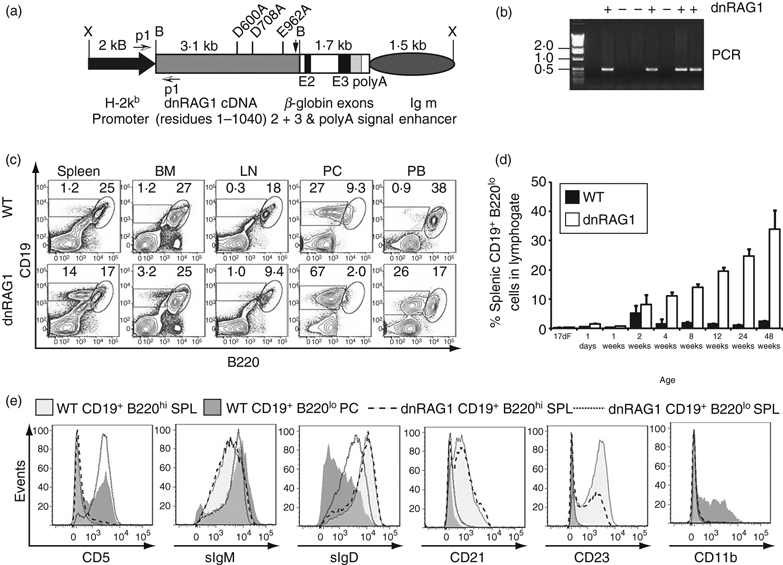Figure 1.

B1-like B cells accumulate in dnRAG1 mice. (a) Diagram of the transgene construct used in this study showing the mutant full-length RAG1 cDNA [including the position of codons encoding alanine substitutions in the DDE motif as well as the stop codon (arrow)], all regulatory elements, and the BamHI (B) and XhoI (X) sites used for releasing the RAG1 cDNA or the entire transgene for generating transgenic mice. Primers used for genotyping are indicated by arrows (p1). (b) PCR genotyping of transgenic mice. (c) An expanded CD19+ B220lo B-cell population is detected in spleen, bone marrow (BM), mesenteric lymph nodes (LN), peritoneal cavity (PC) and peripheral blood (PB) of dnRAG1 mice compared with wild-type (WT) mice at 12 weeks of age by flow cytometry. Percentages of cells in the indicated B220lo and B220hi gates are shown. (d) The percentage of splenic CD19+ B220lo B cells was evaluated in WT and dnRAG1 mice as a function of time from fetal day 17 (17dF) to 48 weeks of age. Differences are highly significant from 4 weeks of age onward (P<0·001). (E) The expression of CD5, sIgM, sIgD, CD21, CD23 and CD11b were compared between gated WT and dnRAG1 splenic CD19+ B220hi B cells (light grey shading or dashed line, respectively), WT PC CD19+ B220lo B cells (dark grey shading), and dnRAG1 CD19+ B220lo B cells (dotted line). Notice that the expression pattern of splenic CD19+ B220lo B cells from dnRAG1 mice more closely resembles WT PC CD19+ B220lo B cells than WT splenic CD19+ B220hi B cells.
